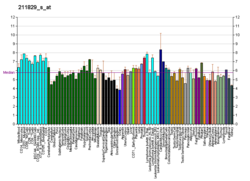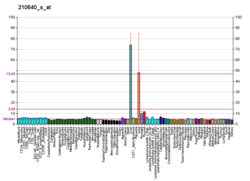GPER
NM_001031682
NM_001039966
NM_001098201
NM_001505
NP_001035055
NP_001091671
NP_001496
G protein-coupled estrogen receptor 1 (GPER), also known as G protein-coupled receptor 30 (GPR30), is a protein that in humans is encoded by the GPER gene. GPER binds to and is activated by the female sex hormone estradiol and is responsible for some of the rapid effects that estradiol has on cells.
The classical estrogen receptors first characterized in 1958 are water-soluble proteins located in the interior of cells that are activated by estrogenenic hormones such as estradiol and several of its metabolites such as estrone or estriol. These proteins belong to the nuclear hormone receptor class of transcription factors that regulate gene transcription. Since it takes time for genes to be transcribed into RNA and translated into protein, the effects of estrogens binding to these classical estrogen receptors is delayed. However, estrogens are also known to have effects that are too fast to be caused by regulation of gene transcription. In 2005, it was discovered that a member of the G protein-coupled receptor (GPCR) family, GPR30 also binds with high affinity to estradiol and is responsible in part for the rapid non-genomic actions of estradiol. Based on its ability to bind estradiol, GPR30 was renamed as G protein-coupled estrogen receptor (GPER). Unlike the other members of the GPCR family, which reside in the outer membrane of cells, GPER is localized in the endoplasmic reticulum.
...
Wikipedia


